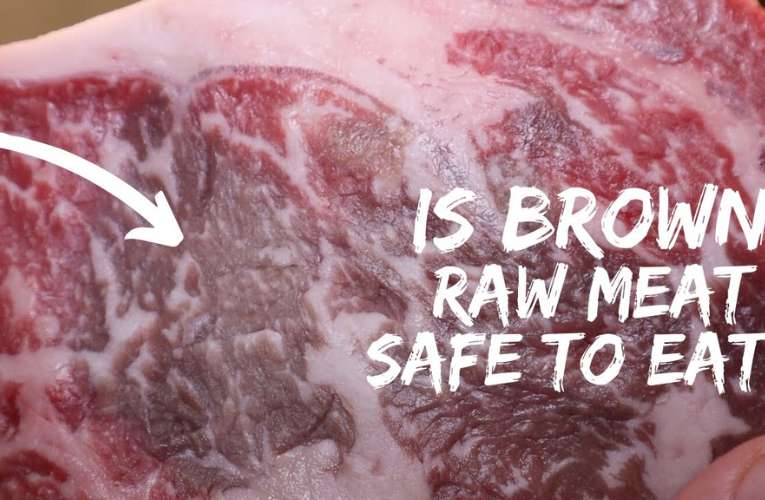Wondering if it’s safe to eat a steak that has turned brown? The color change of a steak from red to brown is a natural process called oxidation, which happens when the meat comes into contact with air.
While the appearance may change, it doesn’t necessarily mean the steak is spoiled. However, it’s crucial to consider other factors such as the smell, texture, and expiration date.
If the steak smells off or has a slimy texture, it’s best to err on the side of caution and discard it to avoid any foodborne illnesses.

The reasons behind steak turning brown
Steak is a popular and delicious meat option for many people, but have you ever noticed that sometimes it turns brown? This can be a bit off-putting for some, especially if you are used to seeing fresh and vibrant red steaks.
However, there are a few reasons why steak can turn brown, and it’s important to understand these reasons to ensure that your steak is safe to eat and to maintain its quality.
Oxidation
One of the main reasons behind steak turning brown is oxidation. When the meat comes into contact with air, it reacts with the oxygen and undergoes a chemical change known as oxidation.
This reaction can cause the red pigment in the meat, known as myoglobin, to turn into a brownish color. This is a natural process and doesn’t necessarily mean that the steak is spoiled or unsafe to eat.
Aging
Another reason for steak turning brown is aging. Some cuts of steak, particularly those that are dry-aged or exposed to controlled conditions for a certain period of time, are intentionally allowed to undergo enzymatic and bacterial action.
This aging process helps to enhance the flavor and tenderness of the meat. During this time, the myoglobin in the meat can break down, leading to a change in color from red to brown.
Packaging and storage
The way the steak is packaged and stored can also play a role in its color change. If the steak is vacuum-sealed or tightly wrapped, it may not come into contact with enough oxygen, which can slow down the oxidation process.
As a result, the steak may retain its red color for a longer period of time. On the other hand, if the packaging is not airtight or the steak is exposed to excessive air, it may turn brown more quickly.
Cooking methods
The way steak is cooked can also impact its color. When steak is cooked at high temperatures, such as on a grill or in a skillet, the exterior can brown due to a process called the Maillard reaction.
This reaction occurs when the amino acids and sugars in the meat react to form new compounds, resulting in the browning effect. However, even if the exterior of the steak is brown, the interior can still remain pink or red, depending on the doneness level desired.
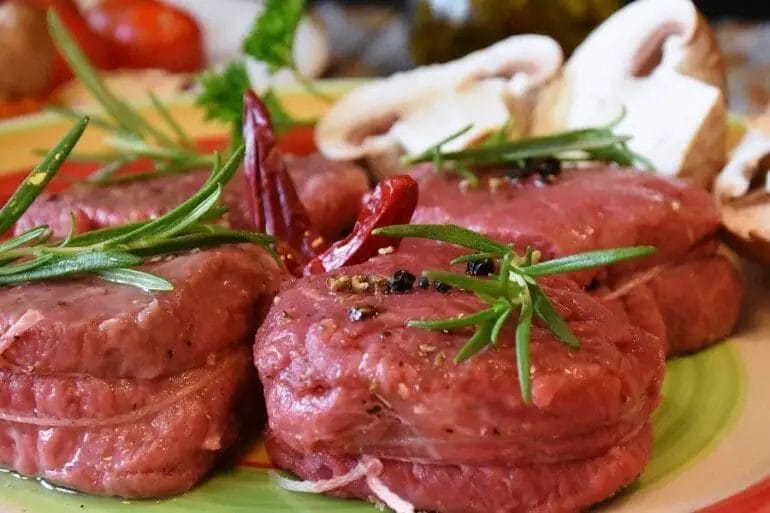
How to Determine If Brown Steak Is Still Edible
Have you ever opened your refrigerator, only to find a brown steak staring back at you? It can be quite disheartening, especially if you were planning to cook it for dinner.
The good news is that not all brown steaks are automatically inedible. In this section, we will discuss how to determine if a brown steak is still safe to eat.
1. Check the Expiration Date
The first thing you should do when you come across a brown steak is to check the expiration date. If the steak has passed its expiration date, it is best to err on the side of caution and discard it.
Expiration dates are put in place to ensure your safety and consuming expired meat can lead to foodborne illnesses.
2. Assess the Odor
Next, give the brown steak a sniff. Fresh steak should have a neutral or slightly sweet odor. If the steak smells sour, rancid, or unpleasant in any way, it is a clear indication that it has gone bad and should be thrown away.
3. Examine the Texture
Take a close look at the texture of the brown steak. If it feels slimy or sticky to the touch, it is a sign of spoilage. A fresh steak should have a moist but firm texture. Additionally, if you notice any visible mold growth on the surface, it is best to discard the steak immediately.
4. Consider the Color
While the brown color of the steak may be concerning, it does not always indicate spoilage. In some cases, the browning could be due to oxidation, which is a natural process that occurs when meat is exposed to air.
However, if the brown color is accompanied by other signs of spoilage such as an off smell or slimy texture, it is best to play it safe and discard the steak.
5. Cook It Properly
If after careful examination you determine that the brown steak is still safe to eat, it is important to handle and cook it properly to minimize any potential risks.
Thoroughly cook the steak to an internal temperature of at least 145°F (63°C) for medium-rare, or higher if desired. This will help kill any bacteria that may be present and ensure the steak is safe to consume.
6. Use Your Judgment
Ultimately, it is up to you to use your judgment when determining if a brown steak is still edible. If you have any doubts or concerns about its safety, it is always better to be safe than sorry and discard it. Your health and well-being should always be the top priority when it comes to food safety.
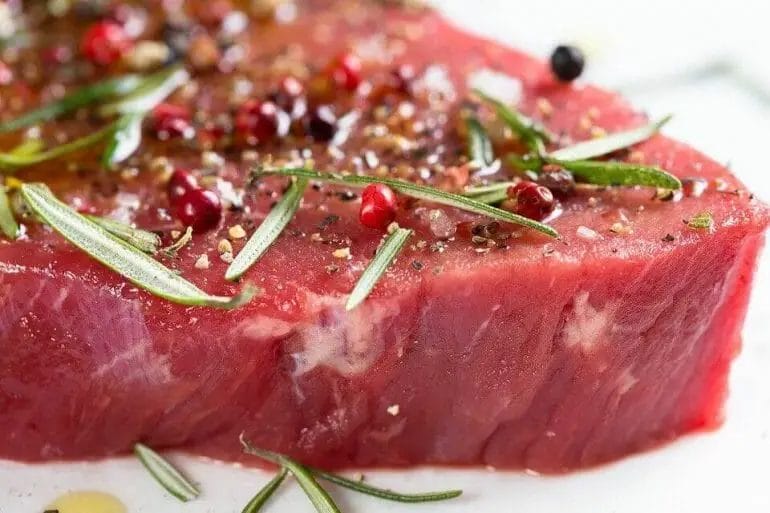
Tips for Storing and Preserving Steak to Prevent Browning
Steak is a beloved and flavorful meat that is enjoyed by many, but its quality can be compromised if not stored and preserved correctly. One common issue that can occur is browning, which can affect both the taste and appearance of the steak.
To ensure that your steak stays fresh and delicious, here are some useful tips for storing and preserving steak to prevent browning:
1. Proper Packaging
When it comes to storing steak, proper packaging is key. The oxygen in the air can cause the meat to oxidize, leading to browning. To prevent this, make sure to wrap the steak tightly in plastic wrap or aluminum foil. This will create a barrier and minimize exposure to air.
2. Vacuum Sealing
An excellent way to preserve the freshness of your steak is by vacuum sealing it. Vacuum-sealed bags remove all the air from the packaging, significantly reducing the chances of browning. This method also helps to prevent freezer burn, maintaining the meat’s texture and flavor.
3. Freezing
If you plan to store your steak for an extended period, freezing is the best option. Freezing halts the enzymatic activity that causes browning and helps to maintain the meat’s quality. Before freezing, ensure that the steak is properly wrapped to prevent freezer burn.
4. Use of Marinades
Marinating your steak not only enhances its flavor but can also help prevent browning. Marinades often contain acidic ingredients like lemon juice or vinegar, which can slow down the enzymatic browning process.
Additionally, the flavors from the marinade will penetrate the meat, making it even more delicious.
5. Keep Refrigerated
Storing your steak in the refrigerator is essential to prevent browning. Make sure to keep the temperature below 40°F (4°C) to inhibit bacterial growth and maintain the steak’s freshness. It is advisable to store the steak on the bottom shelf where the temperature is the coldest.
6. Avoid Overcrowding
When storing steak in the refrigerator, avoid overcrowding. Adequate air circulation is crucial to prevent moisture buildup, which can lead to browning. Allow enough space between each piece of steak to ensure proper cooling and prevent any potential cross-contamination.
7. Quick Consumption
If you want to enjoy your steak at its peak freshness, it is best to consume it within a few days of purchase. The longer the meat is stored, the higher the chances of browning and a decrease in quality. Try to plan your meals accordingly to minimize any waste and savor the optimum flavor of the steak.
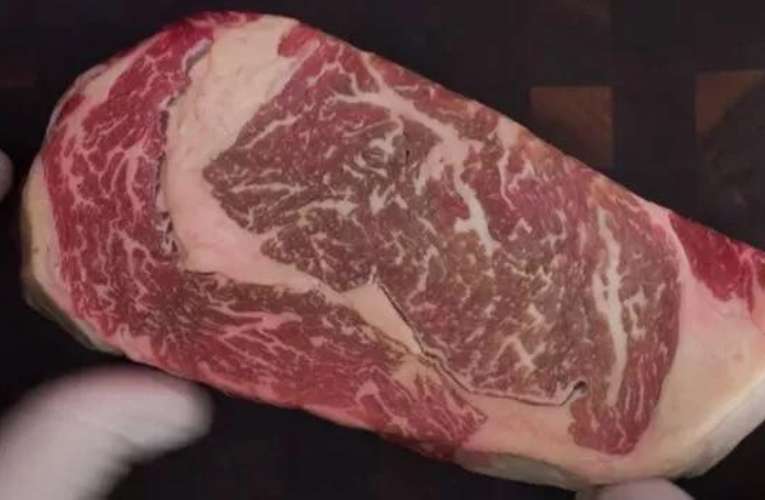
Alternative Uses for Brown Steak
Steak is a beloved and versatile protein that can be enjoyed in a variety of ways. While most people prefer their steak to be cooked to a perfect medium-rare or medium, it is not uncommon to end up with a brown or overcooked steak.
However, don’t let that discourage you! There are still plenty of alternative uses for brown steak that can turn it into a delicious and satisfying meal. In this section, we will explore some creative ways to salvage brown steak and create new culinary delights.
1. Steak Salad
One of the easiest and tastiest ways to use up brown steak is by incorporating it into a hearty steak salad. Start by slicing the steak into thin strips and tossing it with a bed of mixed greens.
Add some colorful veggies like cherry tomatoes, cucumbers, and bell peppers for added freshness. Top it off with a tangy vinaigrette or a creamy dressing of your choice. This refreshing and nutritious salad can be enjoyed as a light lunch or dinner option.
2. Steak Sandwich
A classic steak sandwich is another great option for repurposing brown steak. Slice the steak thinly and sauté it with onions and bell peppers for added flavor. Toast some crusty bread and spread it with your favorite condiments like mayonnaise, mustard, or horseradish sauce.
Layer the steak and vegetable mixture on the bread and top it off with some melted cheese. Grill the sandwich until the cheese is melted and gooey. The result is a mouthwatering sandwich that is perfect for a quick and satisfying meal.
3. Steak Tacos
Tacos are a versatile dish that can be filled with just about anything, including brown steak. Slice the steak into thin strips and season it with your favorite spices like cumin, chili powder, and garlic powder.
Sauté the steak until it is heated through and slightly crispy on the edges. Warm up some tortillas and fill them with the steak, along with your preferred toppings such as salsa, guacamole, and sour cream.
These flavorful steak tacos make for a delicious and easy weeknight dinner option.
4. Steak Stir-Fry
A stir-fry is a quick and healthy way to use up brown steak. Cut the steak into bite-sized pieces and marinate it in a mixture of soy sauce, ginger, and garlic for added flavor.
Heat some oil in a wok or skillet and stir-fry the steak with an assortment of colorful vegetables like broccoli, bell peppers, and snap peas. Serve the stir-fry over steamed rice or noodles for a satisfying and filling meal.
5. Steak Pizza
If you’re feeling adventurous, why not transform your brown steak into a delicious steak pizza? Start by thinly slicing the steak and sautéing it with onions and mushrooms until they are caramelized and flavorful.
Roll out some pizza dough and top it with your favorite sauce, cheese, and the steak mixture. Bake the pizza in a hot oven until the crust is golden and the cheese is bubbly. This unique and tasty pizza variation is sure to impress your family and friends.
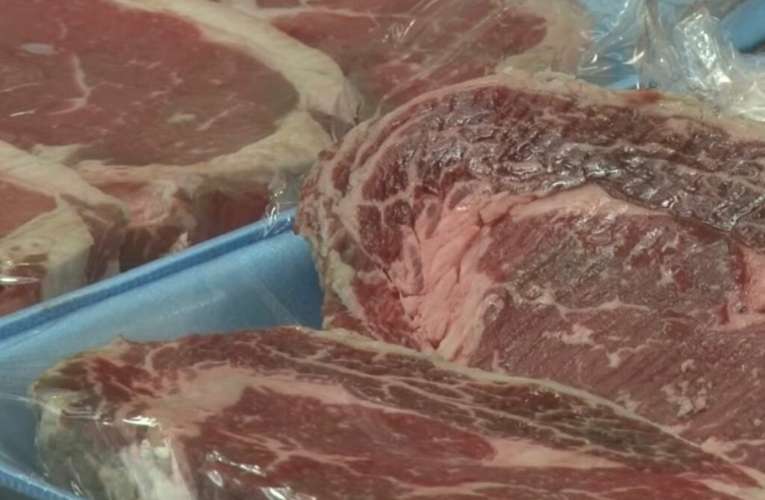
FAQs
Can you eat steak if it turns brown?
Yes, you can eat steak if it turns brown. The color change is due to oxidation and doesn’t necessarily mean the meat is spoiled. However, if there are other signs like a foul odor or slimy texture, it is best to discard it as it may be unsafe to consume.
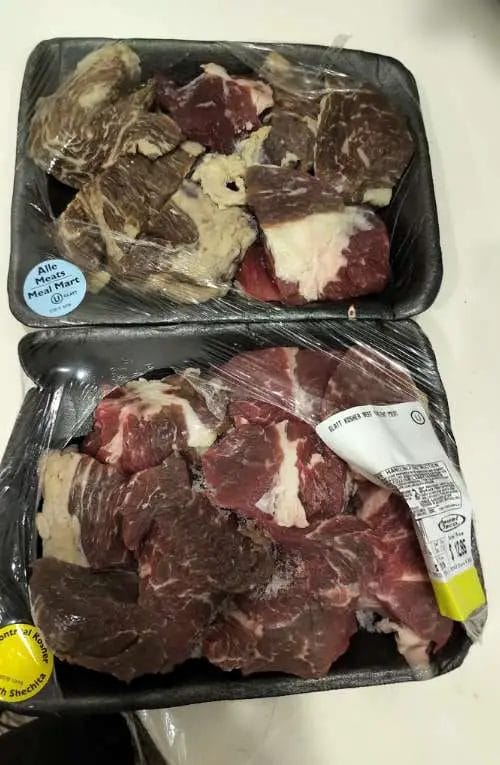
Conclusion
In conclusion, the color of a steak is not always an accurate indicator of its safety or edibility. While a brown color in a steak may be a sign of oxidation or aging, it does not necessarily mean that the meat is spoiled or unsafe to eat.
The appearance of the steak should be evaluated along with other factors such as smell and texture. It is always recommended to use your best judgment and follow proper food safety guidelines when determining the quality and safety of any meat product.
When in doubt, it is advisable to discard the steak to avoid any potential health risks.

